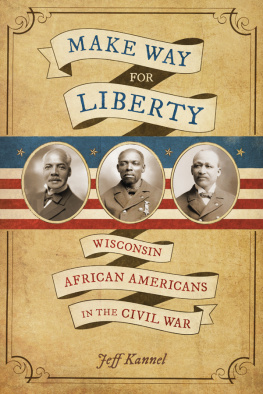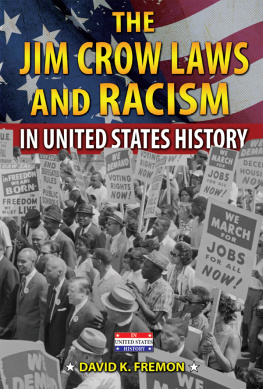ALL EYES
ARE UPON US


Copyright 2014 by Jason Sokol
Published by Basic Books, A Member of the Perseus Books Group
All rights reserved. No part of this book may be reproduced in any manner whatsoever without written permission except in the case of brief quotations embodied in critical articles and reviews. For information, address Basic Books, 250 West 57th Street, New York, NY 10107.
Books published by Basic Books are available at special discounts for bulk purchases in the United States by corporations, institutions, and other organizations. For more information, please contact the Special Markets Department at the Perseus Books Group, 2300 Chestnut Street, Suite 200, Philadelphia, PA 19103, or call (800) 810-4145, ext. 5000, or e-mail .
Designed by Linda Mark
Library of Congress Cataloging-in-Publication Data
Sokol, Jason.
All eyes are upon us : race and politics from Boston to Brooklyn / Jason Sokol.
pages cm
Includes bibliographical references and index.
ISBN 978-0-465-05671-2 (ebook) 1. African AmericansCivil rightsNortheastern StatesHistory20th century. 2. African AmericansCivil rightsNortheastern StatesHistory21st century. 3. African AmericansSegregationNortheastern StatesHistory. 4. Northeastern StatesRace relationsPolitical aspectsHistory. 5. RacismPolitical aspectsNortheastern StatesHistory. 6. Northeastern StatesPolitics and government. 7. Progressivism (United States politics) I. Title.
E185.9.S65 2014
323.1196073074dc23
2014023616
10 9 8 7 6 5 4 3 2 1
For Nina, with love
Contents

F OR EDWARD BROOKE, THE NORTH PULSED WITH PROMISE. BROOKE first set foot in New England during World War Two, when his army regiment trained in Massachusetts. He was a native of Washington, D.C., and Washington was a Jim Crow city. When the war ended, Brooke moved to Boston and enrolled in law school. He voted for the first time in his life. And he did much more. Brooke was elected the states attorney general in 1962; four years later, he won election to the United States Senate. Brooke achieved all of this in a state that was 97 percent white. What constituted political reality in Massachusettsan African American man winning one million white voteswas the stuff of hallucinations below the Mason-Dixon line.
At the same time, an open secret haunted Americas northern states. As the nation gazed at southern whites resistance to the civil rights movementat the Klansmen and demagogues, attack dogs and cattle prodsmany recoiled in horror. Northerners told themselves that such scenes emanated from a backward land, a dying region, a place apart. Yet rampant segregation in cities across the country rendered racial inequality a national trait more than a southern aberration. When black migrants
Here were the two sides to race in the Northeast, embodied in Brookes political success and in Baldwins cautionary tale. The cities of the Northeast were simultaneously beacons of interracial democracy and strongholds of racial segregation.
Both storiesseemingly contradictory storiesunfolded side by side, at the same moments, in the same places. Black neighborhoods congealed in the years after World War Two as segregated schools proliferated across the urban Northeast. The numbers of black northerners in poverty and behind bars would continue to grow. And yet these cities and states also incubated movements for racial equality. African Americans scored advances at the polls, in the courtrooms, and in the regions cultural arenas as well.
The two stories are rarely told together. The North as a land of liberty holds power in the popular mind. When the idea of northern history enters into the public consciousness, it often comes attached to the American Revolution or the Civil War. This was the home of the minutemen, righteous abolitionists, and the noble Union army. Many schools still teach about slavery and segregation as distinctly southern sins. And the North continues to bask in its enlightened glow. To travel from Boston to New York is to take in Harvard and Broadway, high culture and high ideals. Northern states are blue states; they have powered American liberalism and provided the first black president with his largest margins of victory. To many Americans, the North remains a higher place.
To scholars, however, the North as a land of liberty has become a straw man. No reflective historian any longer believes it. Scholars have focused on the Norths dark side. They have shown slaverys deep roots in New England and New York City. Histories of twentieth-century America reveal the Norths bloody record of racial violence, and its stunningly segregated landscape of affluent white suburbs and destitute brown cities. In recent works of history, the North and the South emerge as rough racial equivalents: the South had Mississippi; the North had the Boston busing crisis. If the progressive side of the North enters into these stories, it is depicted as a rhetorical mask that hides the reality of racism.
The truth is that both stories are real, and they have coexistedalbeit uneasily. This kind of truth can be difficult to assimilate. It does not fit with a portrait of American history as the story of freedom. Neither does it jibe with an understanding of America as the story of oppression. The larger tale weaves together these warring strandsit is a story befitting a nation that boasts an African American president as well as staggering racial and economic inequality.
The Northeast has been, and remains, the most American of regions. This is not because it is a glittering model of freedom and democracy. It is because the Northeast has long held genuine movements for racial democracy, and for racial segregation, within the same heart. The Northeast best illuminates the conflict that stands at the center of American race relations.
As late as 2011, the head of Bostons National Association for the Advancement of Colored People (NAACP) noted that his city still had an unsavory reputation among African Americans. Boston is definitely a city that has two sides, reflected Michael Curry. Maybe we should own that. He referred to Bostons abolitionist heritage on the one hand, and its history of white racism on the other. He was hinting that Bostons inhabitants should find a way to embrace that ambiguity. By contrast, most other American cities have one-sided racial histories. The side of racism, segregation, and oppression has always won out.
This book does not downplay the brutality of racial violence or the persistence of segregation. Indeed, it documents this ugly history. But it takes seriously the advantages that African Americans have had in the North, and it makes much of the regions traditions of political and racial progressivism.
Among the advantages of northern life, none was more important than the fact that African Americans could vote. Blacks exercised this crucial right of American citizenship. As their numbers grew after World War Two, they influenced the political culture of northern cities and states, making these places more malleable and more democratic. African Americans elected some of their own. They placed their hands on the levers of urban political machines. They forced white officials to support civil rights legislation at the local and national levels. Their electoral clout also fueled interracial and multiracial coalitions, creating an atmosphere in which white voters would support black candidates.
Next page









